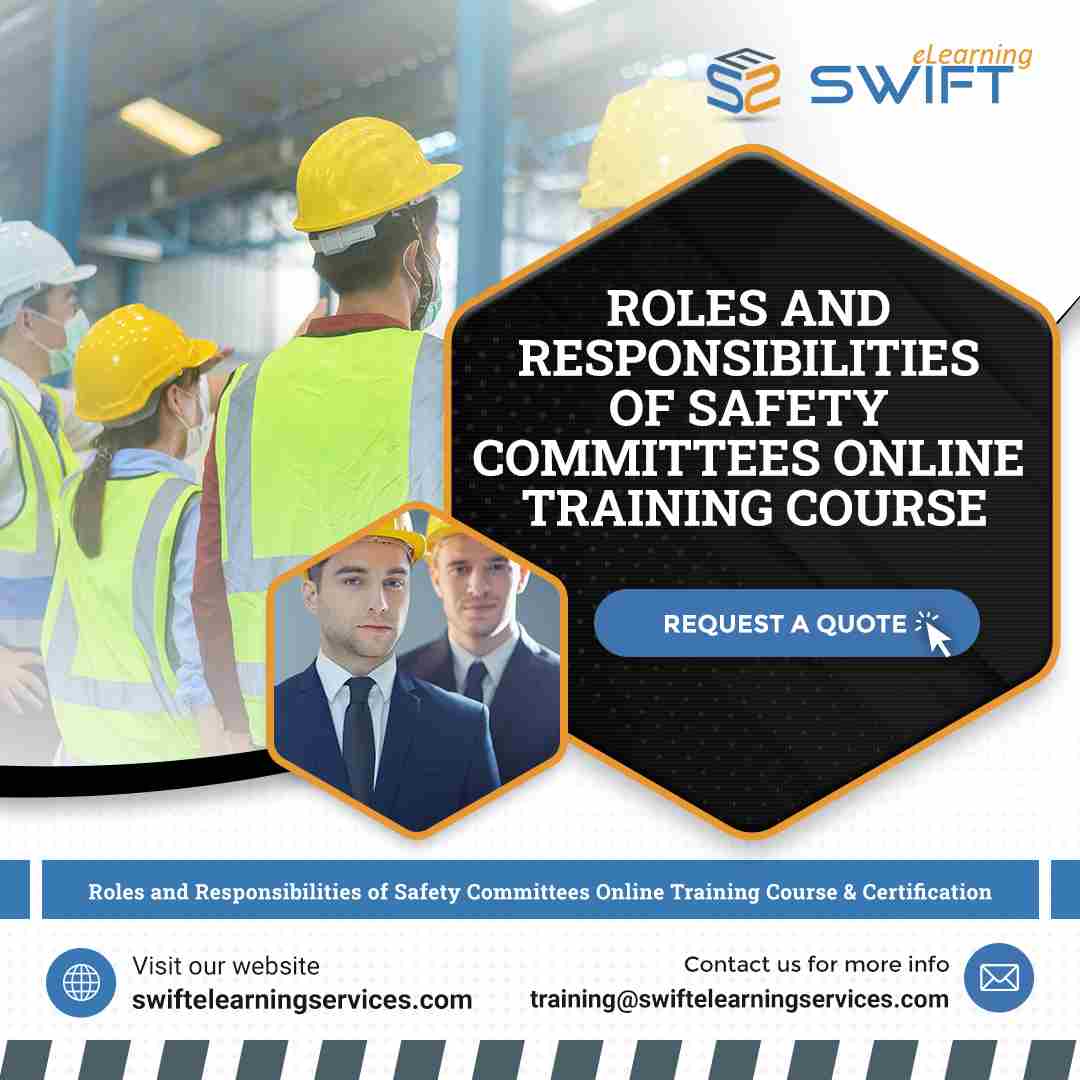Roles and Responsibilities of Safety Committees

Introduction
Safety committees play a vital role in ensuring a secure work environment for employees. By actively identifying potential hazards, assessing risks, and implementing preventive measures, safety committees contribute to the overall well-being of an organization. Swift eLearning Services, a leading provider of comprehensive eLearning solutions, recognizes the significance of safety committees and offers specialized training courses to equip committee members with the necessary knowledge and skills. In this blog post, we will delve into the roles and responsibilities of safety committees and how Swift eLearning Services empowers organizations to enhance their safety practices.
1. The Importance of Safety Committees
Safety committees serve as a cornerstone of an organization’s safety management system. They act as a central hub for identifying and addressing safety concerns, fostering a culture of safety, and ensuring compliance with relevant regulations and standards. By involving representatives from various departments and levels of the organization, safety committees bring diverse perspectives and expertise to the table, enhancing the effectiveness of safety initiatives.
2. Roles and Responsibilities of Safety Committees
2.1 Hazard Identification and Risk Assessment
One of the primary responsibilities of safety committees is to identify potential hazards within the workplace and assess the associated risks. This involves conducting regular inspections, analyzing incident reports, and engaging with employees to gather insights. Swift eLearning Services’ training courses provide committee members with the necessary tools and techniques to effectively identify hazards and prioritize them based on the level of risk. By understanding how to conduct comprehensive risk assessments, committee members can implement appropriate control measures to mitigate risks effectively.
2.2 Incident Reporting and Investigation
Safety committees are responsible for establishing an efficient incident reporting system. They ensure that all incidents, accidents, near misses, and potential hazards are promptly reported and thoroughly investigated. Swift eLearning Services’ training equips committee members with the skills to create an incident reporting framework, emphasizing the importance of accurate and detailed incident documentation. By conducting thorough investigations, safety committees can identify root causes and implement corrective actions to prevent similar incidents in the future.
2.3 Emergency Preparedness and Response
Safety committees play a crucial role in developing and implementing emergency preparedness plans. They assess potential emergency situations, devise evacuation procedures, and coordinate with relevant stakeholders to ensure a swift and organized response. Swift eLearning Services’ training courses provide committee members with the knowledge and tools to create comprehensive emergency preparedness plans that address various scenarios, including natural disasters, fires, and medical emergencies. By fostering a culture of preparedness, safety committees contribute to the well-being and safety of employees during challenging situations.
2.4 Communication and Training
Effective communication is essential for safety committees to successfully fulfill their responsibilities. They are responsible for disseminating safety information, promoting awareness, and providing training to employees. Swift eLearning Services’ training courses focus on equipping committee members with effective communication strategies, ensuring that they can effectively convey safety messages and engage employees. Additionally, Swift eLearning Services offers customizable training modules that empower safety committees to deliver engaging and impactful safety training to the workforce.
3. Swift eLearning Services’ Expertise
Swift eLearning Services understands the significance of safety committees and offers specialized training courses to enhance their effectiveness. Through innovative instructional design strategies and interactive multimedia elements, Swift eLearning Services ensures that committee members actively engage in the learning process, resulting in improved comprehension and retention of the training material.
The training courses provided by Swift eLearning Services cover all the essential aspects of safety committee roles and responsibilities, including hazard identification, risk assessment, incident reporting, emergency preparedness, and effective communication. By partnering with Swift eLearning Services, organizations can equip their safety committees with the knowledge and skills necessary to create a safe and secure work environment.
Conclusion
Safety committees play a pivotal role in maintaining workplace safety, and their roles and responsibilities are critical to an organization
